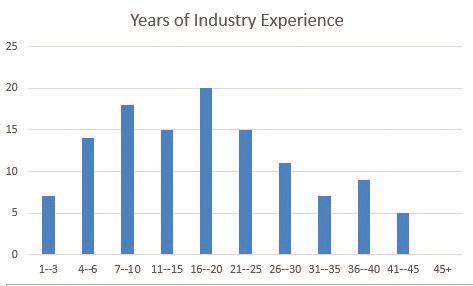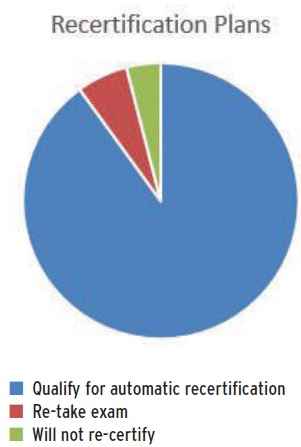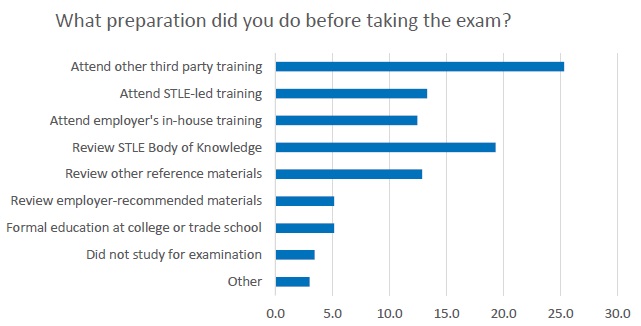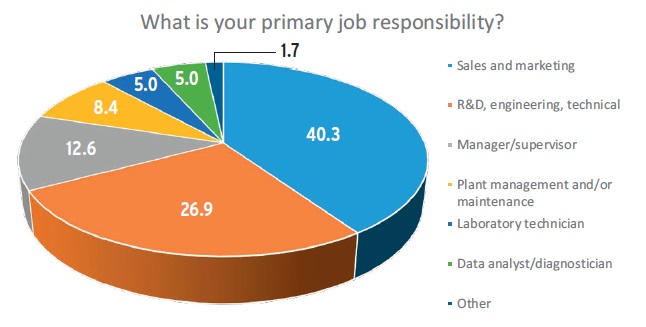Becoming an OMA-certified industry professional
Jim Arner | TLT Certification June 2015
A new survey helps profile the typical holder of this important industry credential.

www.canstockphoto.com
STLE’S OIL MONITORING ANALYST™ (OMA) CERTIFICATION has become one of the society’s many signature services. OMA I was established in 1999 and OMA II in 2001, making the credential STLE’s second certification after the successful launch of the Certified Lubrication Specialist™ (CLS) in 1993. They were followed by the Certified Metalworking Fluids Specialist™ (CMFS) in 2005.
However, the OMA is unique in that the OMA Certification Committee determined a need for two different programs, OMA I and OMA II. But what were those differences? Even STLE had a hard time initially identifying the two.
Officially, OMA I certification is designed for a technician or lubrication specialist, someone who uses oil analysis as a regular practice. The OMA II specification was established for the laboratory diagnostician or for a lubrication specialist responsible for establishing and supervising the operation of an oil analysis program. The key distinction is that the person with an OMA II certification would have a more comprehensive understanding of oil analysis.
To be certified, an individual must pass an OMA Certification Exam containing 150 multiple-choice questions in five subject areas: fundamentals, sampling, analysis tests, interpretation and troubleshooting. In order to pass the test, the candidate must score at least 70%. The certification is valid for a three-year period, after which you must recertify by submitting documentation confirming you meet four of 12 specific criteria, or you have the option of retaking the examination.
SURVEY RESULTS
The OMA Certification Committee recently conducted a survey of OMA I-certified individuals to collect demographic information and build a profile of a typical professional holding the designation. The idea is to help STLE target specific activities in order to improve the program.
A typical certified individual has 18-plus years of experience in the lubricants industry, and 80% of the current list of certified individuals hold at least one other certification, including:
•
STLE’s CLS, CMFS and OMA II programs
•
National Lubricating Grease Institute’s CLGS
•
The International Council for Machinery Lubrication’s MLT/MLA.
Other industry certifications focus on such skills as vibration analysis, thermography and ultrasound best practices.
Figure 1 shows that many individuals with fewer than 10 years of experience also have passed the OMA exams and, thus, have reduced the average years of industry experience of a typical holder.
 Figure 1. Many individuals with fewer than 10 years of experience have passed the OMA exam.
Figure 1. Many individuals with fewer than 10 years of experience have passed the OMA exam.
Survey respondents also say the OMA has made a valuable contribution to their careers. The survey reveals that 96% of respondents say they would recertify, whereas only 4% said they would not. Among the 4%, most say the designation was no longer relevant to their work or that they had changed positions or retired.
Regarding OMA recertification, 90% of respondents say they prefer to meet the standard by demonstrating their ongoing industry learning and education; 6% indicate they would prefer to retake the exam (
see Figure 2).
 Figure 2. The different percentages of the recertification criteria.
Figure 2. The different percentages of the recertification criteria.
For those who pass the exam, 67% say they had to do some studying, and 22% stated that they needed to take at least one preparatory training course—usually an STLE education seminar, employer-sponsored in-house training or at publicly offered certification-preparation courses. Eight percent of certification holders say they did very little or no studying prior to taking the exam, and they attributed their success to their industry experience and knowledge. See Figure 3 for more information on how people prepared for the exam.
 Figure 3. A look at how people prepared for the exam.
Figure 3. A look at how people prepared for the exam.
Only a small percentage of laboratory technicians are certified (
see Figure 4). The largest category of OMA holders are lubricant sales representatives from major oil companies or lubricant marketers and distributors (
see Figure 5).
 Figure 4. The different job responsibilities of those who are certified.
Figure 4. The different job responsibilities of those who are certified.
 Figure 5. The primary businesses, with lubricants manufacturer or marketer taking the lead.
Figure 5. The primary businesses, with lubricants manufacturer or marketer taking the lead.
WHO NEEDS CERTIFICATION?
Perhaps the most important question you need to ask is: Why do you not have the OMA certification? Let’s first review a fundamental basis for oil analysis.
As oil is the lifeblood of machinery, you sample and analyze an oil from a machine as your doctor would check your blood. The results can help identify the condition of the oil and the machinery. If you are in the business of testing and analyzing oil, it makes sense for you to have this certification. If you sell lubricating fluids, you should likewise have a strong understanding of oil analysis in order to explain the details to your customers. And if you happen to use lubricants in your business, you should have a good understanding of the chemical and physical terms used in the industry.
On a personal note, my family doctor would never get away with a verbal “your results look a bit high.” Instead I grill him with questions like: What is the value? What was the result last time and the time before that? What is the target range of values expected? At what point do we do something? He now knows better and instead just hands me the report to read the values on my own.
Here are some questions to ask to determine if OMA certification would benefit you:
1.
Are you involved in selling oil to a customer?
2.
Do you oversee machinery with large system capacities that operate in severe environments or are prone to contamination?
3.
Do you have units that are critical to the plant’s operating success?
4.
Are you a laboratory technician running tests on the samples?
5.
Do you operate your own in-house sample analysis program?
6.
Are you responsible for equipment reliability at your facility?
If you answer yes to any of these questions, then certification might benefit your career.
Those with the OMA certification emphasize the value they place on the credential. They let us know that STLE certification programs have a very good reputation in the industry and automatically confer respect and credibility. “STLE Certified” on their business cards, they add, is a great talking point, and having this certification has given them confidence in recommending solutions to mechanical challenges in their or their customer’s facility.
An important final note on this topic. Let OMA certification open doors for you. More important, the knowledge and training you possess can help prevent a catastrophic machine failure.
Jim Arner is a lubricants specialist for Pirr Tribology Solutions in Mississauga, Ontario, Canada, and a member of STLE’s OMA Certification Committee. He’s also the 2015 recipient of STLE’s Vic Joll Award for outstanding service to a local section. You can reach him at arnerjha@gmail.com.